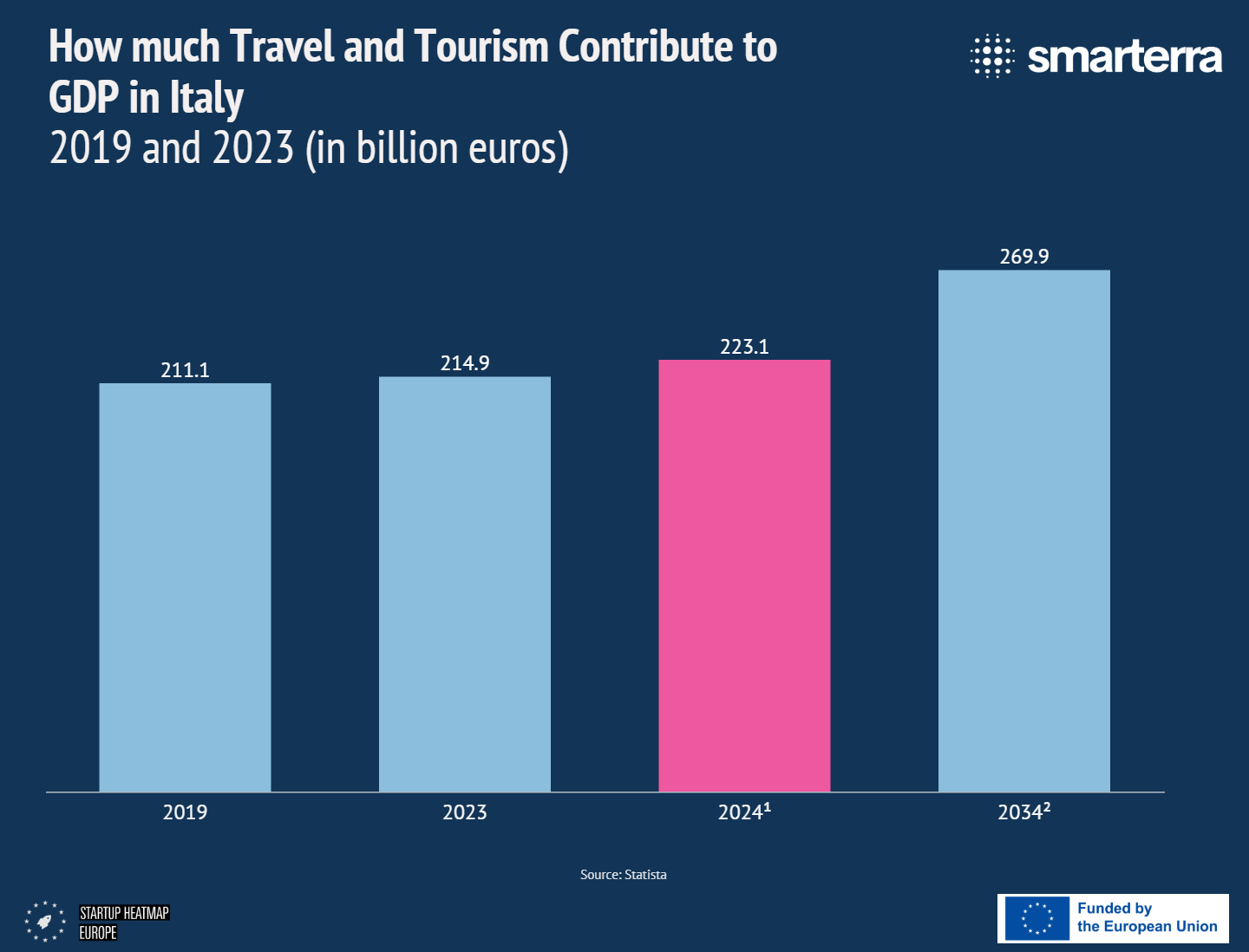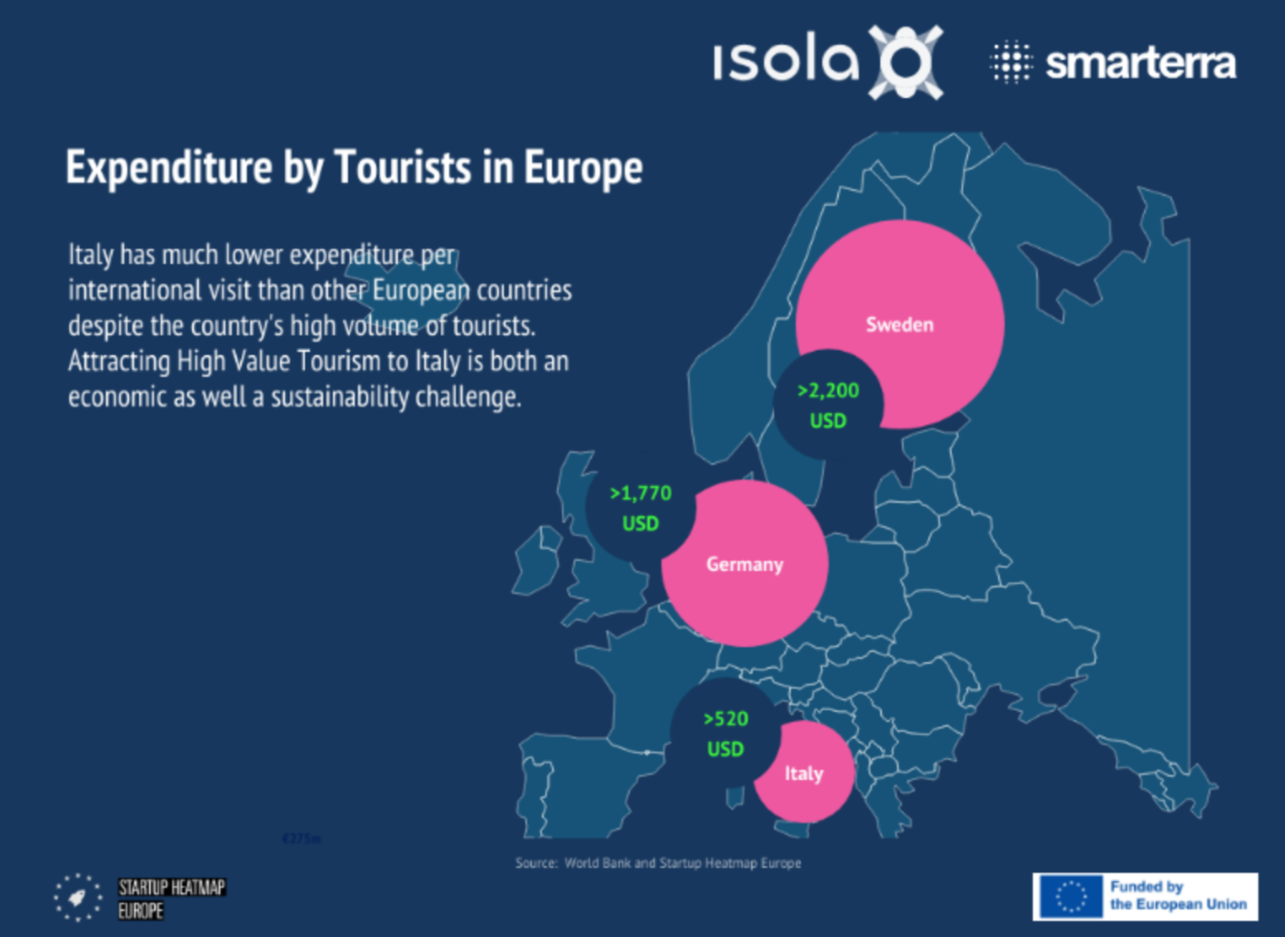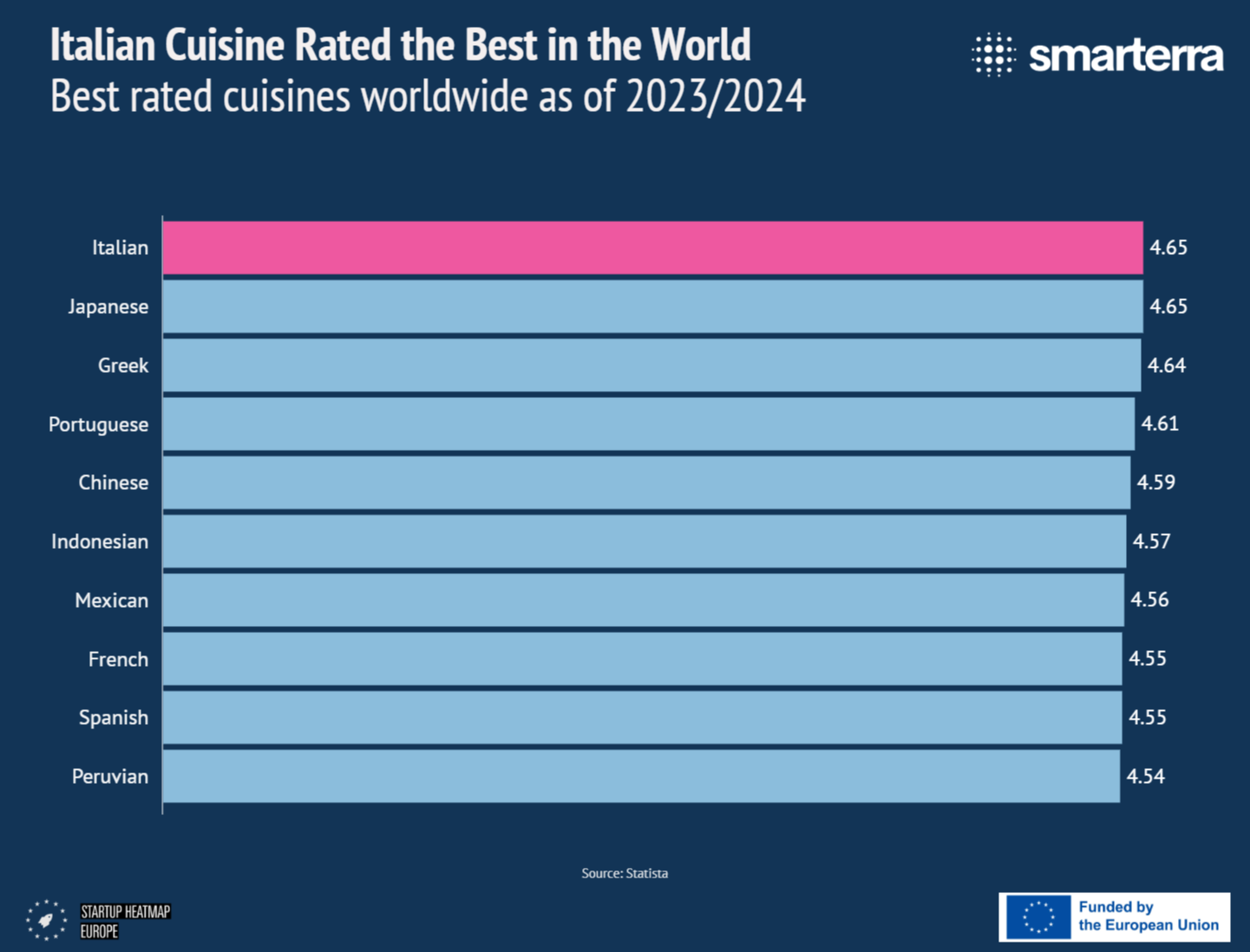How ‘LOHAS’ Consumers Could Revolutionize Tourism in the South Of Italy

Isola Catania Impresa Sociale S.r.l.
Isola Catania is a social enterprise, an Impact and Community Hub born inside Palazzo Biscari1, it is part of the seven “Late Baroque Towns of the Val di Noto” a UNESCO World Heritage Site. The palace, rebuilt after the 1693 earthquake, is an example of late Baroque architecture, a symbol of Catania’s identity. Isola Catania manages approximately 1000 square meters of a wing of the Palace and, inside its spaces, contemporary and historical elements interact without conflicting and give an international atmosphere to a versatile environment. One of the actvities lead by Isola Catania is the management of cultural heritage and the use of spaces for business tourism activities hybridized with cultural activities are the basis of the tourism development program, which is associated with specific projects that involve the local culture of hospitality with circular tourism models. Isola’s flagship services include support for the planning of Workation (work on vacation) and Bleisure (business and leisure travel) stays, innovative forms of Business Tourism that combine work and holiday in a tourist location.
Our tourism development program is focused on the enhancement of the territory aimed, in the long term, at generating a change in the reference community. By promoting the Etna Valley as a destination that mixes business and tourism, we have been building a network of trust with tourist and cultural operators such as: small-scale accommodation facilities that have redeveloped Historic Buildings and catering and restaurants offering local products and employing fragile subjects, artisans and food producers. The vision of Isola is to contribute to the improvement of the quality of life in Sicily. Isola’s mission is to generate opportunities for sustainable development, creating a virtuous community together with extraordinary people and organizations.
Why Does Isola Catania develop its activities in the South of Italy, especially in Catania?
The various quality of life indices reveal a particularly disheartening picture when studying the complex territorial situation of the province of Catania and the Sicilian Region. The 2024 report by ‘Il Sole 24 Ore’, for example, places Catania 83nd out of 107 provinces, based on the results of over 100 indicators divided into categories
These and other data reinforce the urgency of Isola: it is the scarcity of economic and work opportunities, as well as the inequalities that arise starting from school, that force young Sicilians into an uncertain future of emigration or poverty. South of Italy, especially Catania, needs social enterprises that can innovate and improve the quality of the life
What opportunities does Isola Catania identify?
When we think of Italy, images of sun-soaked vineyards, olive groves, and tables piled high with vibrant, mouthwatering dishes come to mind. Southern Italy, in particular, is celebrated worldwide for its culinary heritage—yet, paradoxically, this region struggles to attract high-spending tourists. The numbers speak for themselves: while Italy sees far more visitors than countries like Sweden or Denmark, these tourists spend significantly less per stay. Sweden, for instance, hosts a fraction of Italy’s tourists but generates four times the expenditure per visitor.
A New Destination for AgriFood Tourism
Southern Italy has long been known for its rich culinary traditions, stunning landscapes, and world-class ingredients. Yet, despite these strengths, the region’s tourism economy often falls short of its potential. While Italy attracts millions of visitors yearly, the spending per tourist remains lower than in countries like Sweden or Denmark. To change this, Southern Italy has a unique opportunity to cater to a growing global demographic: LOHAS (Lifestyle of Health and Sustainability) consumers. These travelers prioritize wellness, sustainability, and authentic experiences and are willing to pay a premium for them.

The steady growth in travel and tourism’s contribution to Italy’s GDP, from €211.1 billion in 2019 to a projected €269.9 billion by 2034, shows the sector’s resilience and potential for expansion. For Southern Italy, this represents a critical opportunity to attract a larger share of high-value tourism by leveraging its unique cultural heritage, agrifood traditions, and natural beauty. By investing in sustainable and experiential tourism, the region can drive economic growth, create jobs, and position itself as a leading destination for both domestic and international travelers.
What’s the missing ingredient?
The answer lies in a growing global demographic trend: Lifestyle of Health and Sustainability (LOHAS) consumers. These travelers prioritize wellness, sustainability, and authentic, high-quality experiences—and they are willing to pay a premium for them. LOHAS consumers are fueling a new wave of tourism in countries like Sweden, where the New Nordic Kitchen 3movement has rebranded the country as a beacon of sustainability and culinary creativity. By embracing similar principles, Southern Italy has the potential to not only attract but also captivate this high-expenditure audience, transforming its tourism economy.

The steady growth in travel and tourism’s contribution to Italy’s GDP, from €211.1 billion in 2019 to a projected €269.9 billion by 2034, shows the sector’s resilience and potential for expansion. For Southern Italy, this represents a critical opportunity to attract a larger share of high-value tourism by leveraging its unique cultural heritage, agrifood traditions, and natural beauty. By investing in sustainable and experiential tourism, the region can drive economic growth, create jobs, and position itself as a leading destination for both domestic and international travelers.
The LOHAS Opportunity
LOHAS consumers represent a global shift in priorities. They seek food experiences that are as nourishing for the planet as they are for the soul. In Sweden, more than 50% of consumers identify with the LOHAS lifestyle, and this demand has reshaped the country’s culinary and agricultural landscape. Organic food markets thrive, chefs collaborate with sustainable farmers, and tourists flock to experience eco-conscious fine dining paired with pristine Nordic landscapes.
Contrast this with Southern Italy, where tourism and hospitality industries compete primarily on price. Restaurants and accommodations often undersell themselves, catering to low-spending visitors rather than leveraging the region’s unparalleled cultural and culinary richness. Additionally, consumer interest in organic and sustainable products remains low. Organic food, for example, makes up only 3.6% of the retail market in Italy, compared to 12% in Denmark and 8.2% in Sweden.
If Italy wants to compete with destinations like Sweden in attracting affluent travelers, it must realign its brand with values that resonate with LOHAS consumers: health, sustainability, and innovation.
A Vision for AgriFood Innovation in Southern Italy
The key to unlocking this transformation lies in connecting agriculture, gastronomy, and tourism through innovation. Southern Italy already possesses the foundational elements: world-class ingredients, centuries-old culinary traditions, and breathtaking landscapes. What’s missing is the infrastructure to create integrated, sustainable experiences that align with LOHAS values. Southern Italy has a wealth of DOP4 (Protected Designation of Origin) and IGP (Protected Geographical Indication) products; just a few kilometers apart, there are numerous Slow Food5 Presidia (projects that support small-scale, traditional food producers). The combination of these ingredients with typical traditional recipes could enhance the perceived value for consumers willing to pay a higher price, appreciating the value of the raw ingredients of the product itself. For example, combinations such as Cassatella di Agira and Modica chocolate; a salad of Sicilian red oranges (IGP), fennel from the island of Capo Rizzuto (IGP) with Tropea red onion (IGP); and many other examples.
Imagine this: a Sicilian vineyard, surrounded by the Vulcano Etna, that incorporates permaculture practices and offers eco-conscious wine-tasting tours. Visitors could cycle between vineyards, participate in sustainable fishing excursions along the coast, or enjoy a curated wellness retreat featuring yoga, meditation, and plant-based cuisine inspired by the Mediterranean diet. Or an hotel in a citrus farm next to Siracusa, that collaborates with local, organic farmers to provide guests with farm-to-table dining. An innovative chef building upon his/her grandmother’s traditional farmhouse cooking, using hyper-local, seasonal ingredients. Guests can spend their mornings visiting the Greek Theater or harvesting herbs in the countryside and their afternoons learning to cook alongside local chefs in hands-on workshops. These are the kinds of unique, high-quality experiences that LOHAS consumers crave—and that they are willing to pay for.

The ranking highlights Italian and Japanese cuisines as the top-rated globally, both scoring 4.65, reflecting their universal appeal and influence. Greek, Portuguese, and Chinese cuisines follow closely, showcasing the popularity of Mediterranean and Asian flavors. This strong performance underlines the potential for Italy, particularly Southern regions, to leverage its culinary heritage in tourism and agrifood marketing, appealing to international tastes and driving economic growth.
What does Isola Suggest? To build a Movement
Italy needs a movement similar to Sweden’s New Nordic Kitchen to achieve this vision. This movement begins by bringing together innovative chefs, agri-entrepreneurs, and tourism professionals committed to sustainability and creativity. Local governments and industry associations must actively foster collaboration, provide funding for agri-innovation, and promote Italy’s new identity as a LOHAS destination.
Moreover, there is an urgent need to shift consumer awareness. Educational campaigns and events, such as the Make in South festival, can showcase the benefits of organic and sustainable food. At the same time, local businesses can pilot initiatives proving sustainability is profitable and desirable.
Smarterra.org, the lead organization, seeks to unite agricultural innovators, gastronomic pioneers, and ecosystem builders to create sustainable and high-value agrifood solutions in the Mediterranean. This initiative aligns perfectly with the vision of transforming Southern Italy into a global hub for LOHAS tourism. Italy’s tourism economy doesn’t need more visitors—it needs better visitors or supplies better services. The LOHAS demographic offers the perfect opportunity to reimagine the South’s tourism model, transforming it into a beacon of health, sustainability, and innovation. By prioritizing sustainable AgriFood experiences, Southern Italy can finally tap into the high-expenditure tourism market, ensuring long-term prosperity for the region and its communities.
The South of Italy has the world’s most celebrated cuisine. It’s time for it to lead the world in sustainability and innovation as well.
About the Author

Alessandro calcagno
Alessandro Calcagno, AFC Manager of Isola Catania, is also an Ambassador of the Smarterra project, which aims to build the Future Mediterranean Agrifood Ecosystem. Isola Catania is a social enterprise, an Impact and Community Hub born inside Palazzo Biscari1, it is part of the seven “Late Baroque Towns of the Val di Noto” a UNESCO World Heritage Site. The palace, rebuilt after the 1693 earthquake, is an example of late Baroque architecture, a symbol of Catania’s identity.
